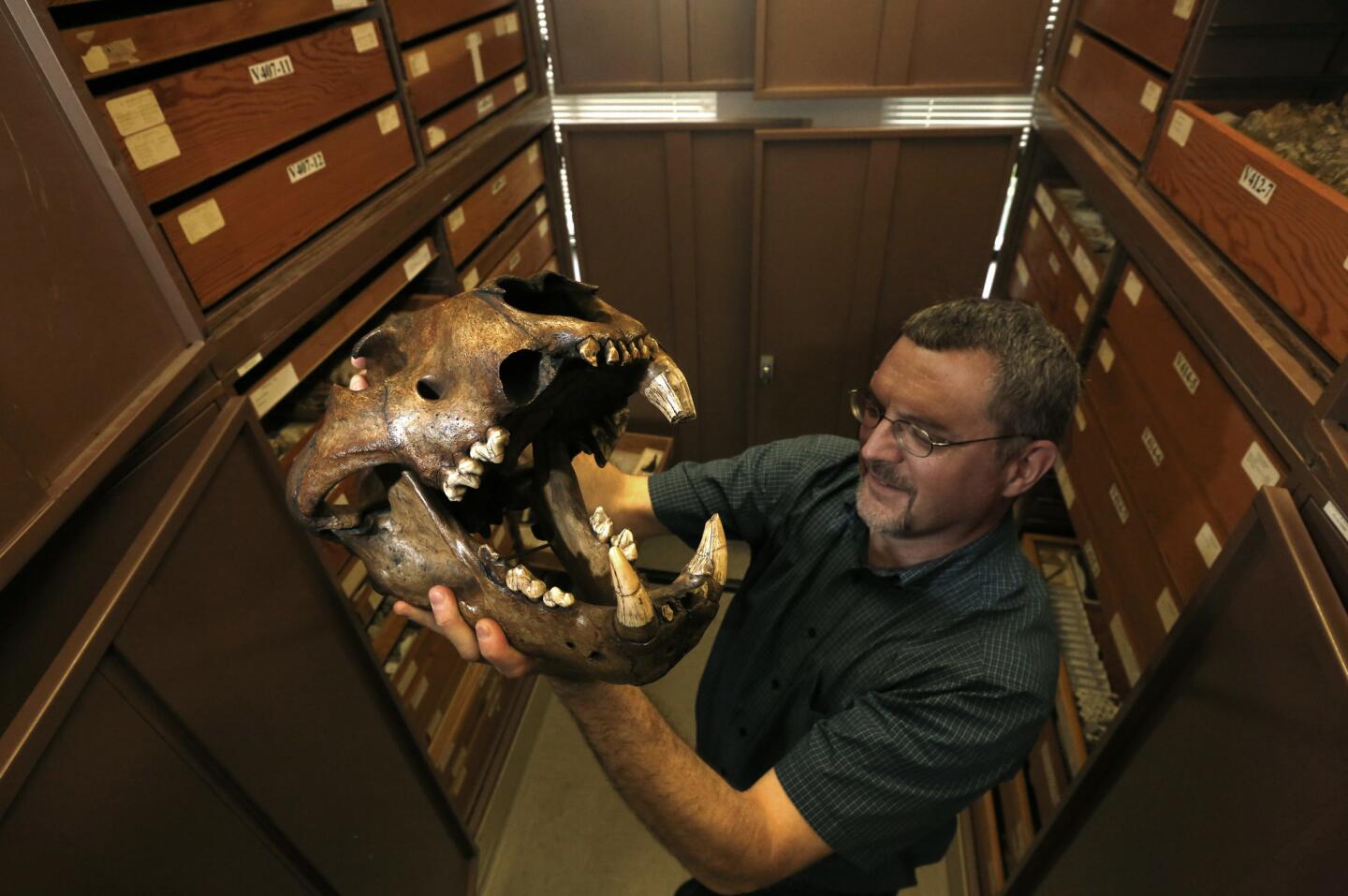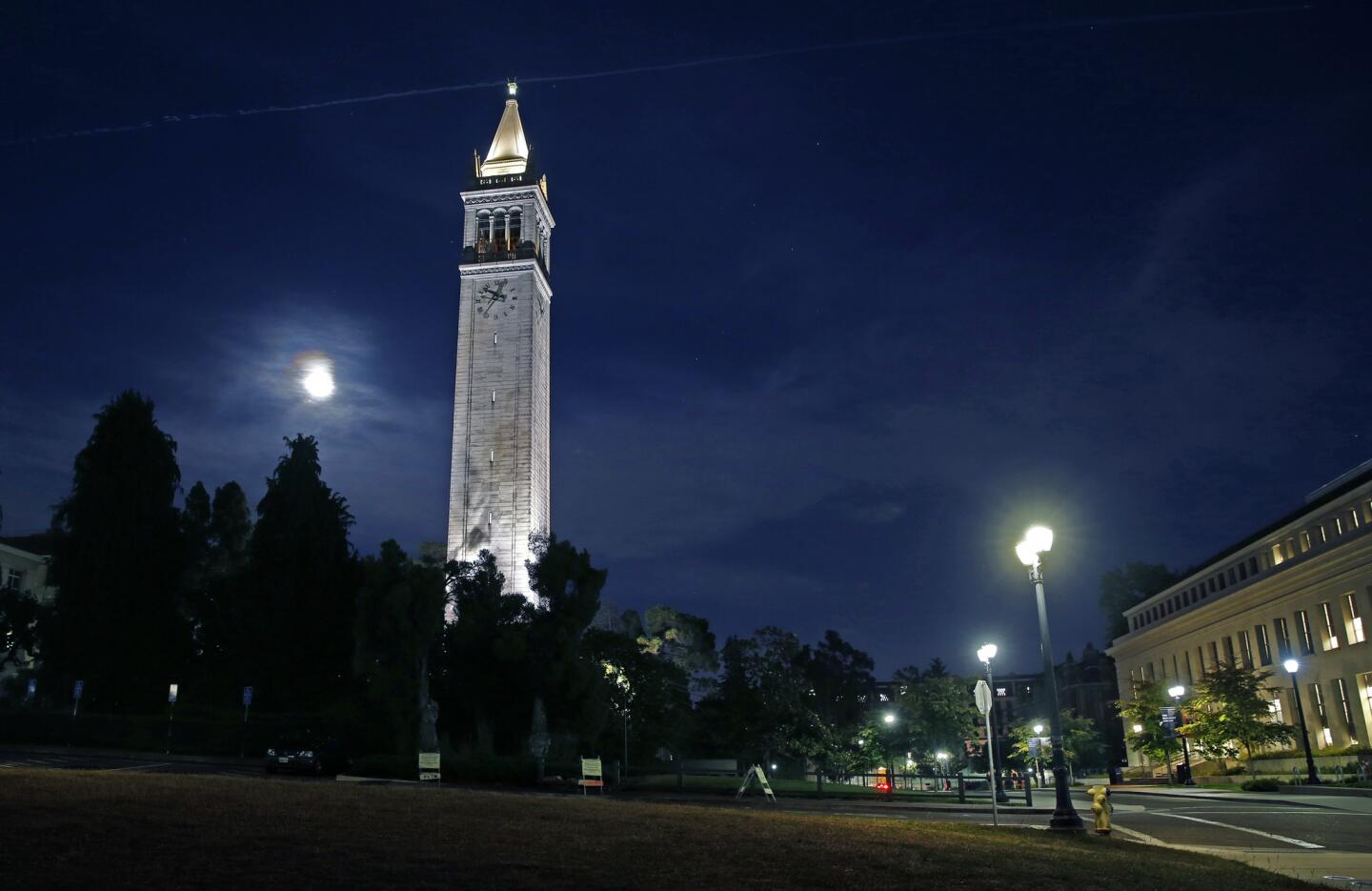
The Campanile, also known as Sather Tower, on the UC Berkeley campus.
(Don Bartletti / Los Angeles Times)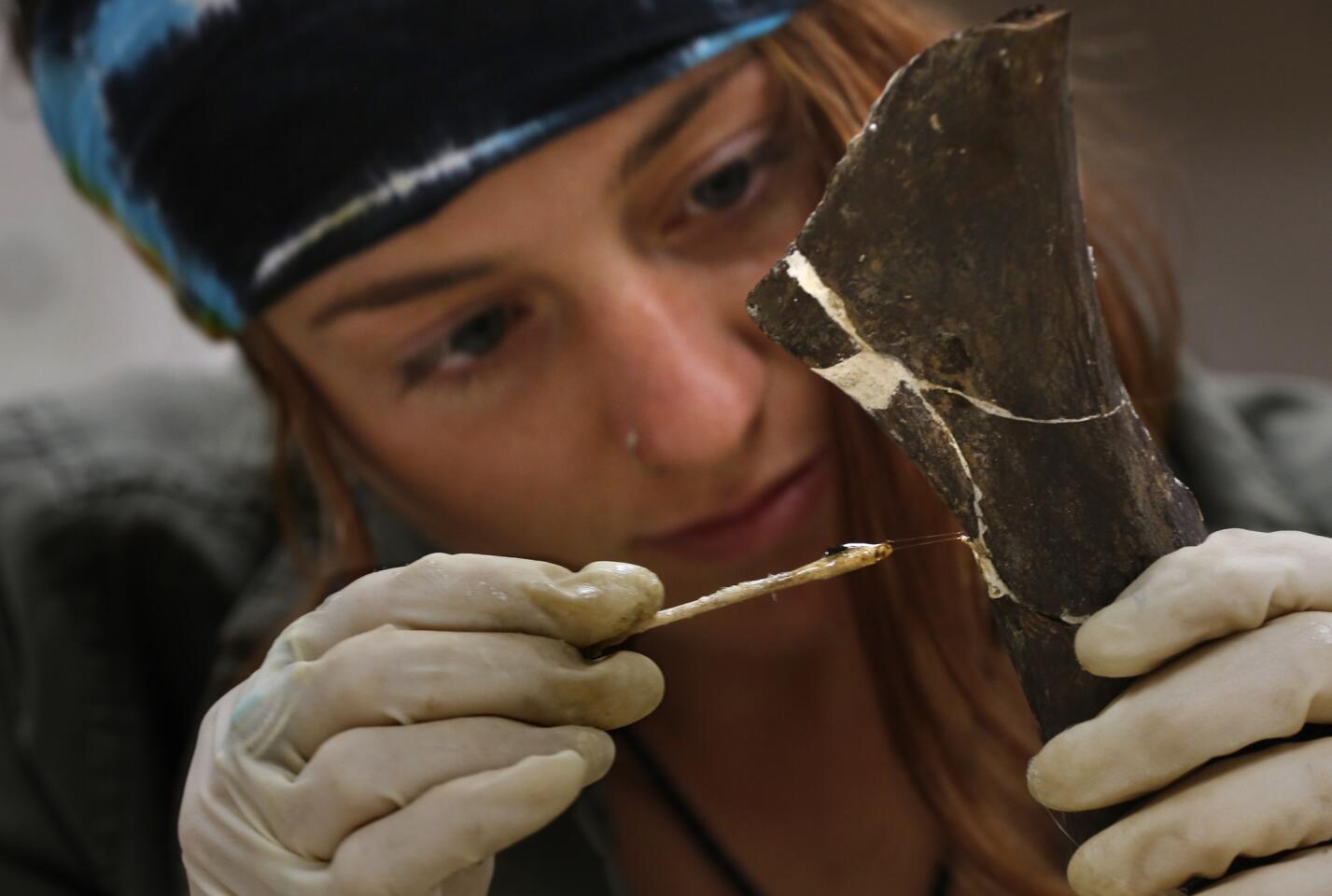
UC Berkeley student Michele Maybee glues together bone fragments from an ancient camel.
(Don Bartletti / Los Angeles Times)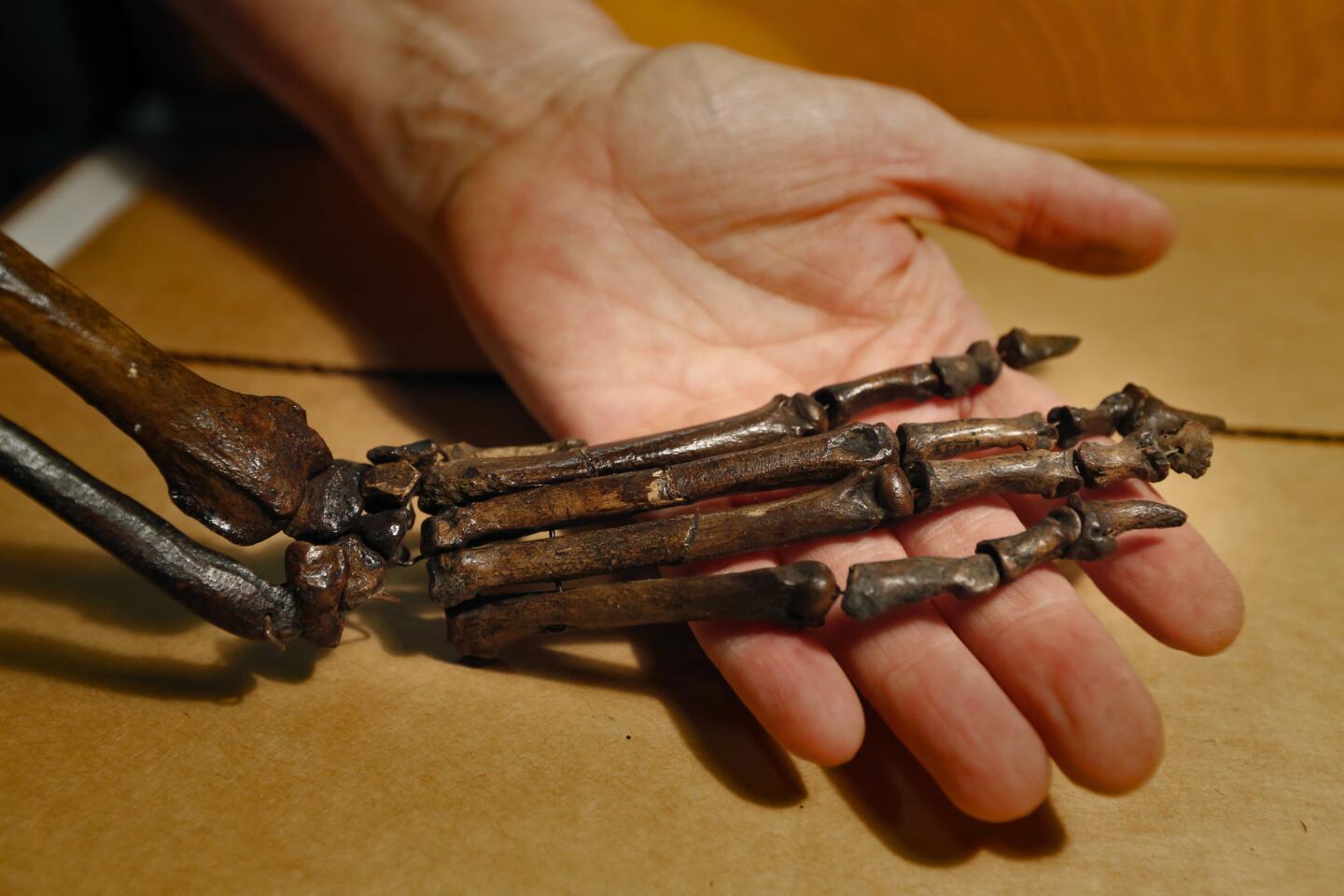
Bones forming a dire wolf’s paw were found in the La Brea Tar Pits.
(Don Bartletti / Los Angeles Times)Advertisement
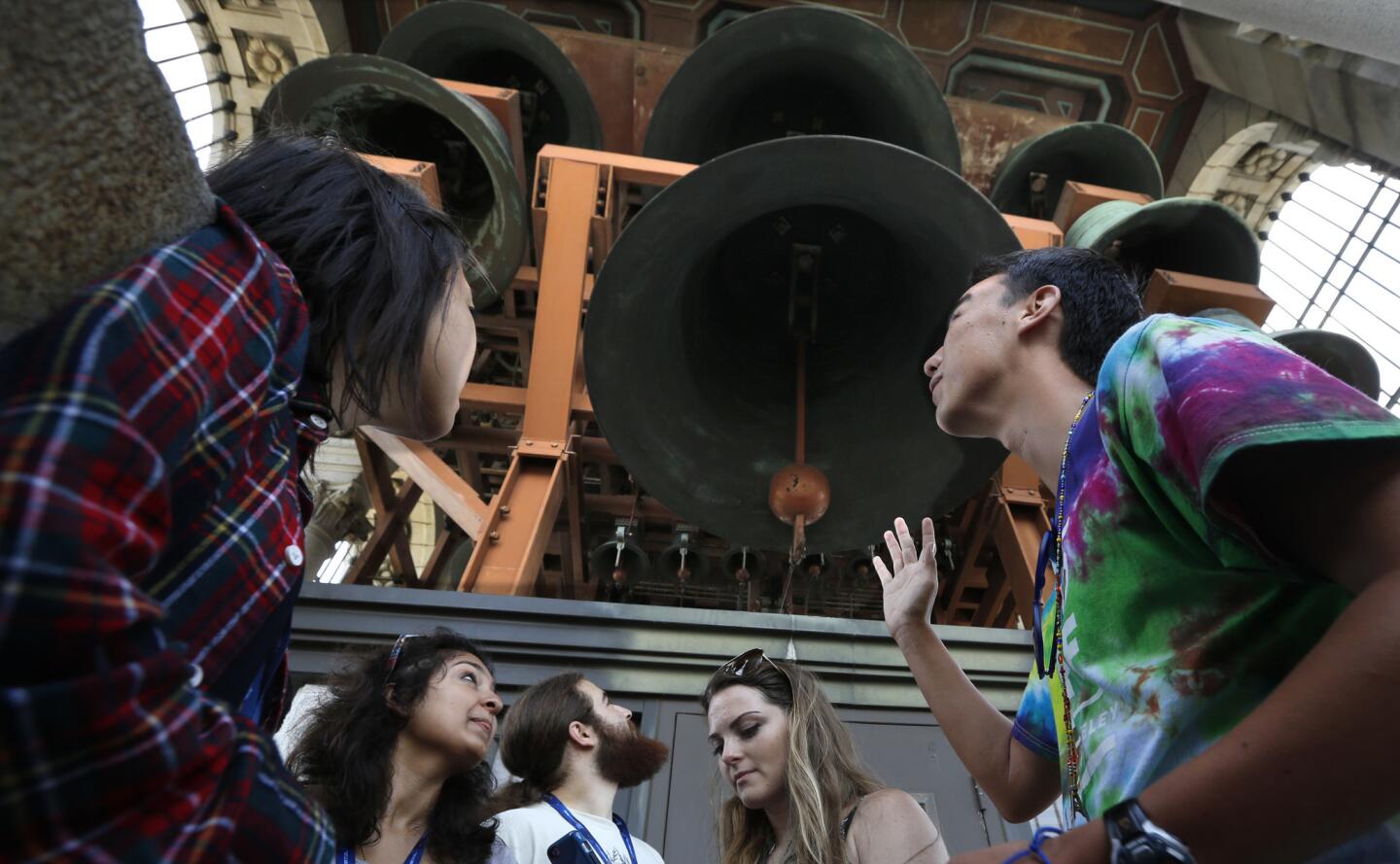
Students examine the Campanile’s 61-bell carillon.
(Don Bartletti / Los Angeles Times)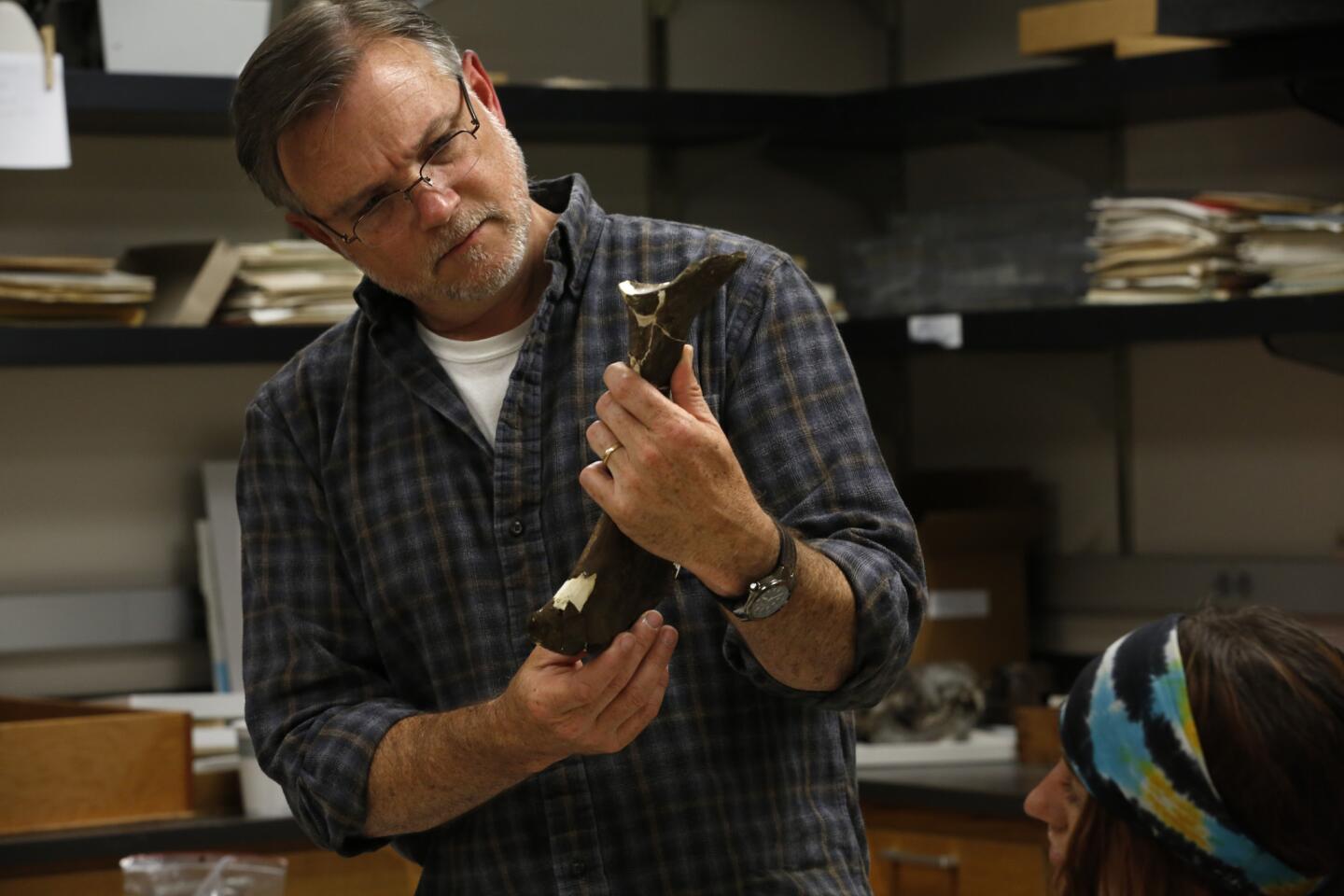
UC Berkeley graduate student Eric Holt inspects an ancient camel bone reconstructed from fragments glued together. “It’s like putting together a giant jigsaw puzzle,” he says.
(Don Bartletti / Los Angeles Times)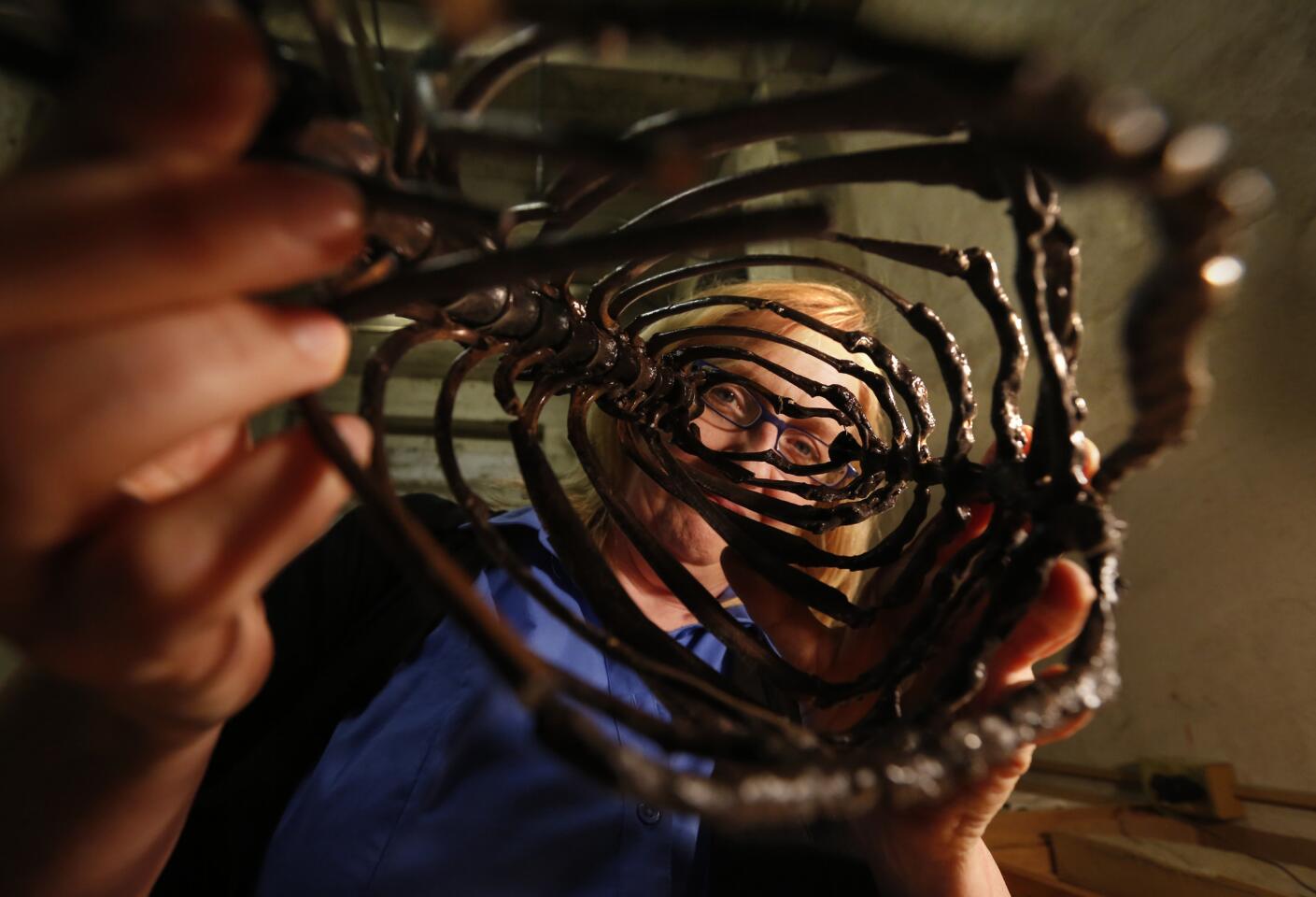
Patricia Holroyd, a senior museum scientist, displays the spine and rib cage of a dire wolf found in the La Brea Tar Pits in the early 20th century.
(Don Bartletti / Los Angeles Times)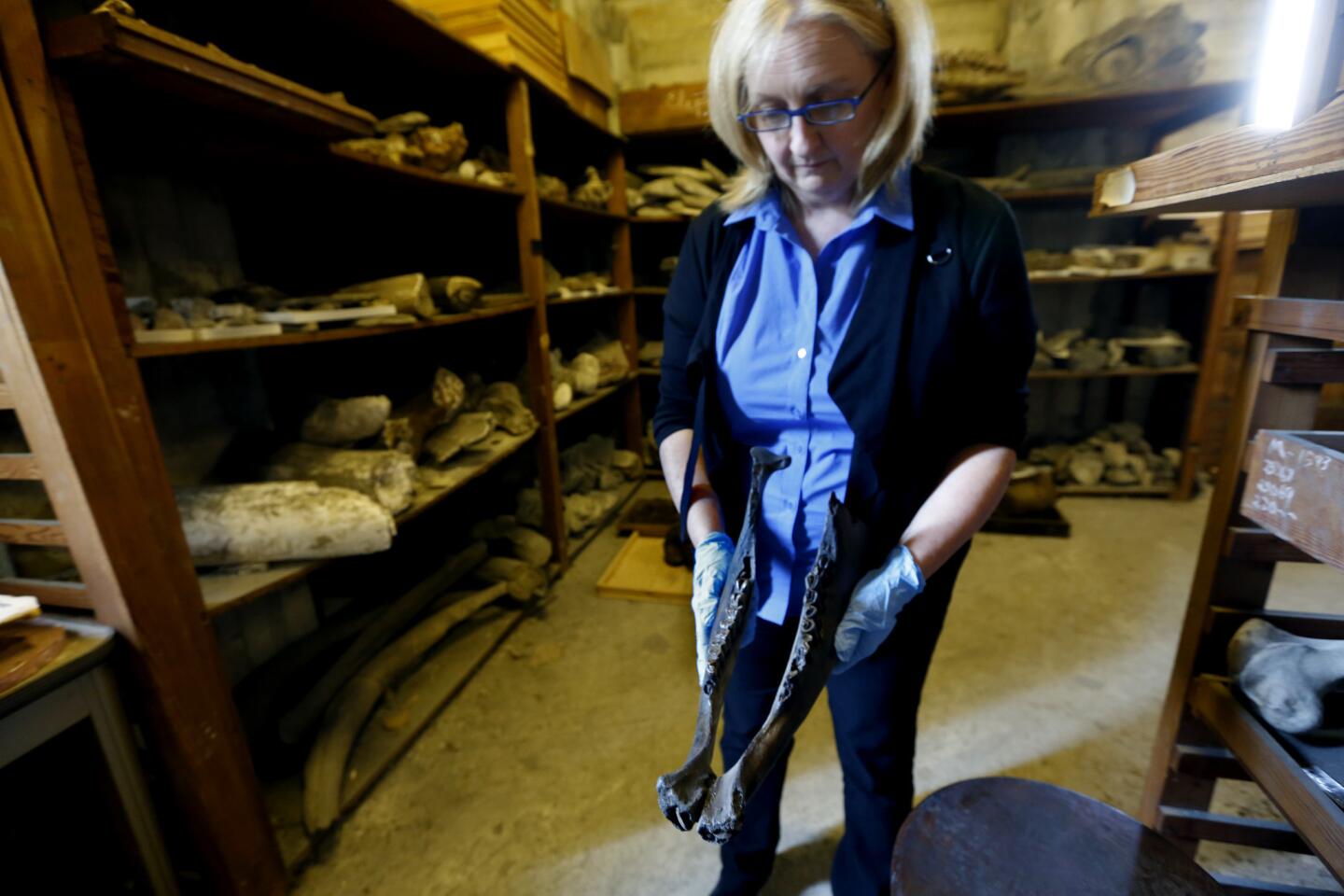
Patricia Holroyd shows the jawbones of a 22,000-year-old bison, also from the La Brea Tar Pits.
(Don Bartletti / Los Angeles Times)Advertisement
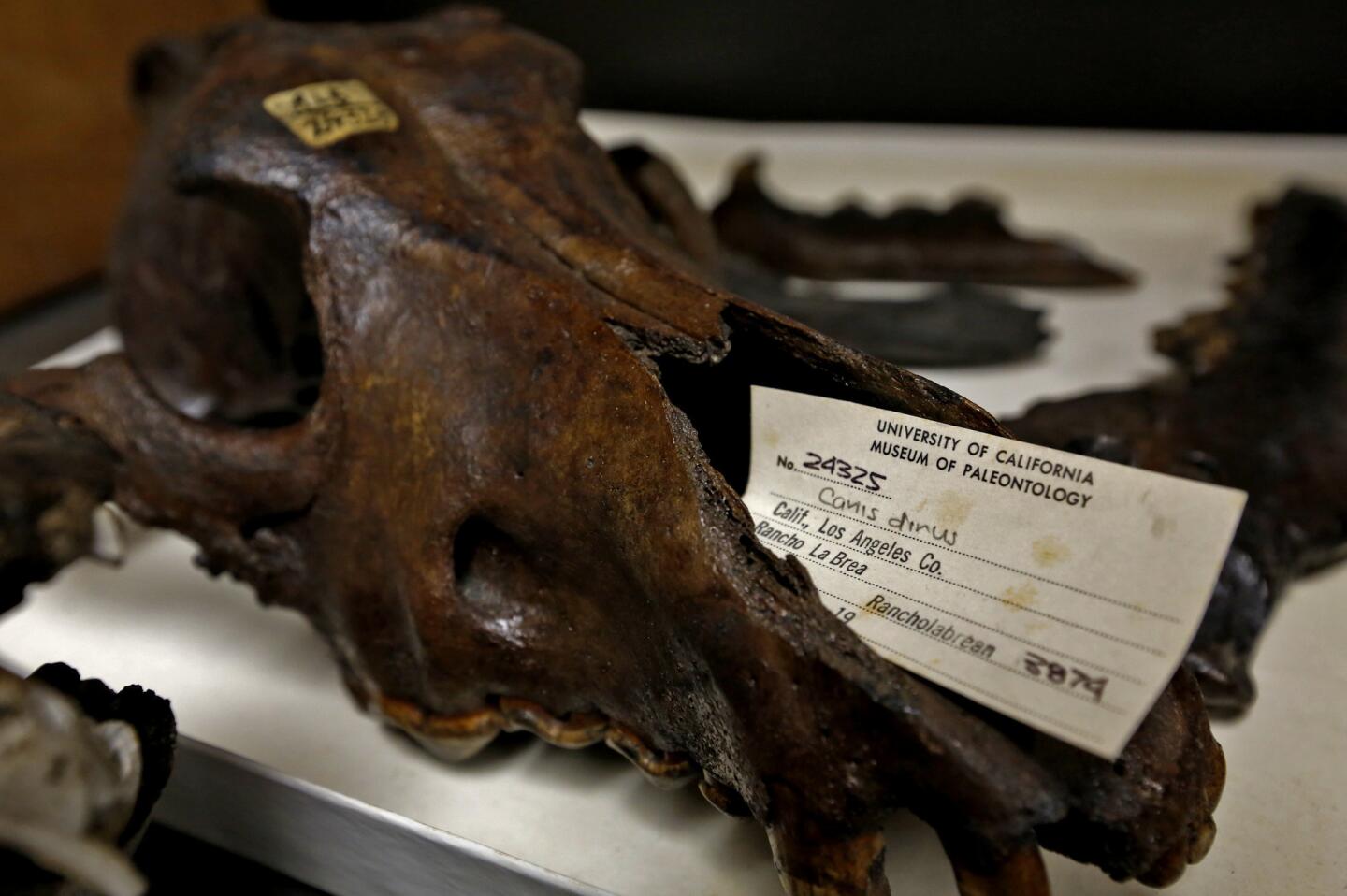
A dire wolf skull from the La Brea Tar Pits.
(Don Bartletti / Los Angeles Times)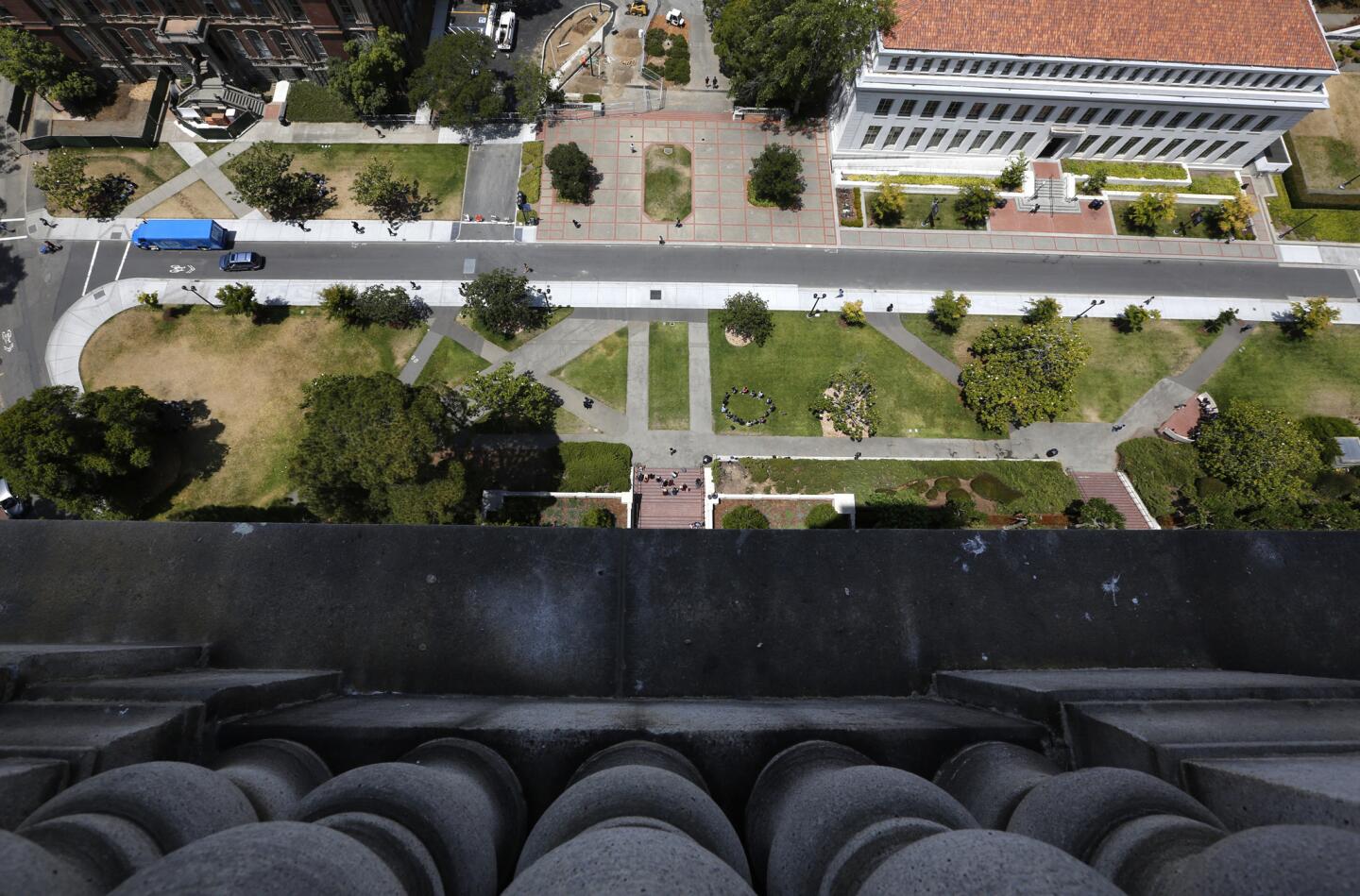
The view from the top of UC Berkeley’s 307-foot Campanile.
(Don Bartletti / Los Angeles Times)